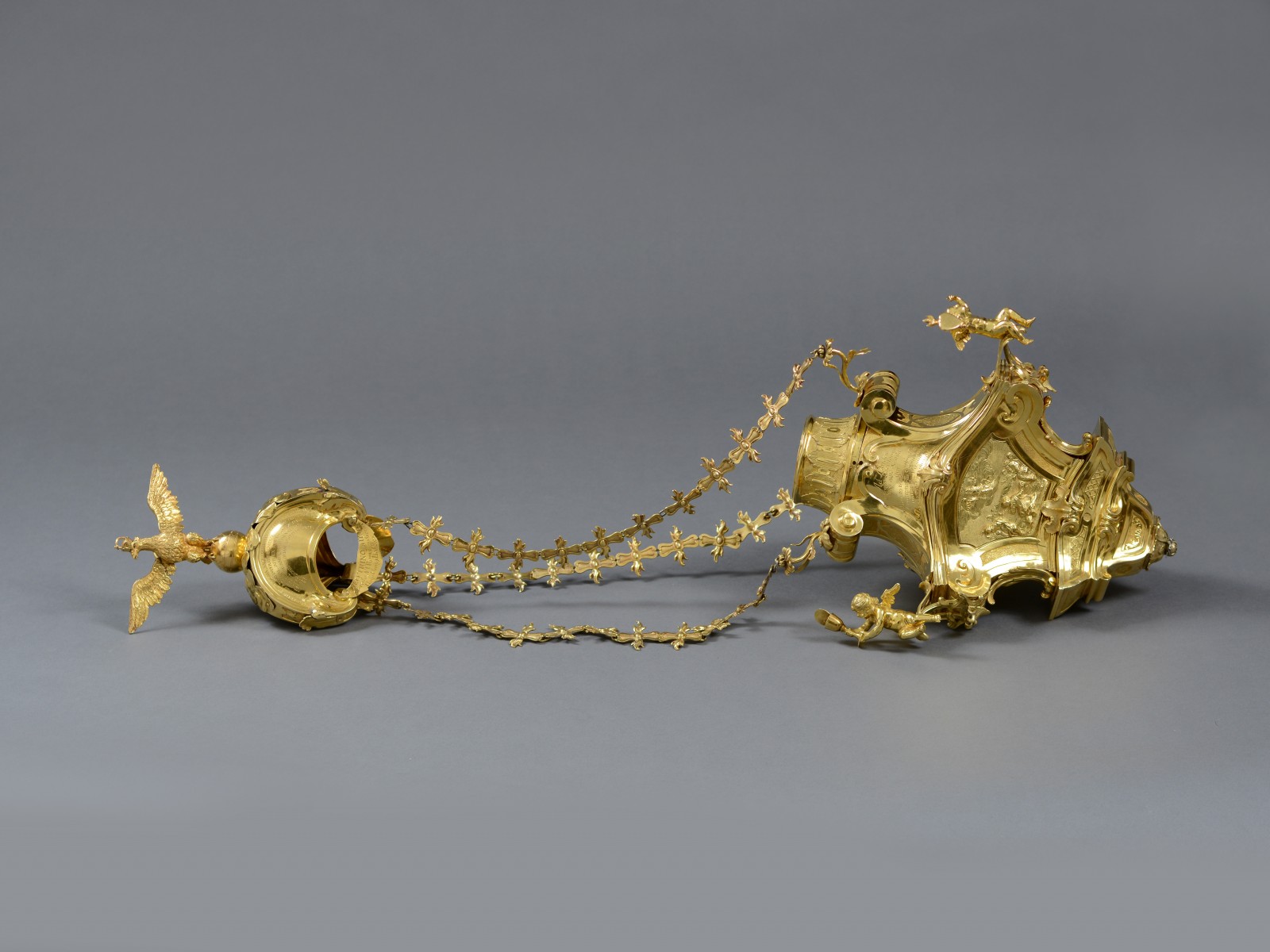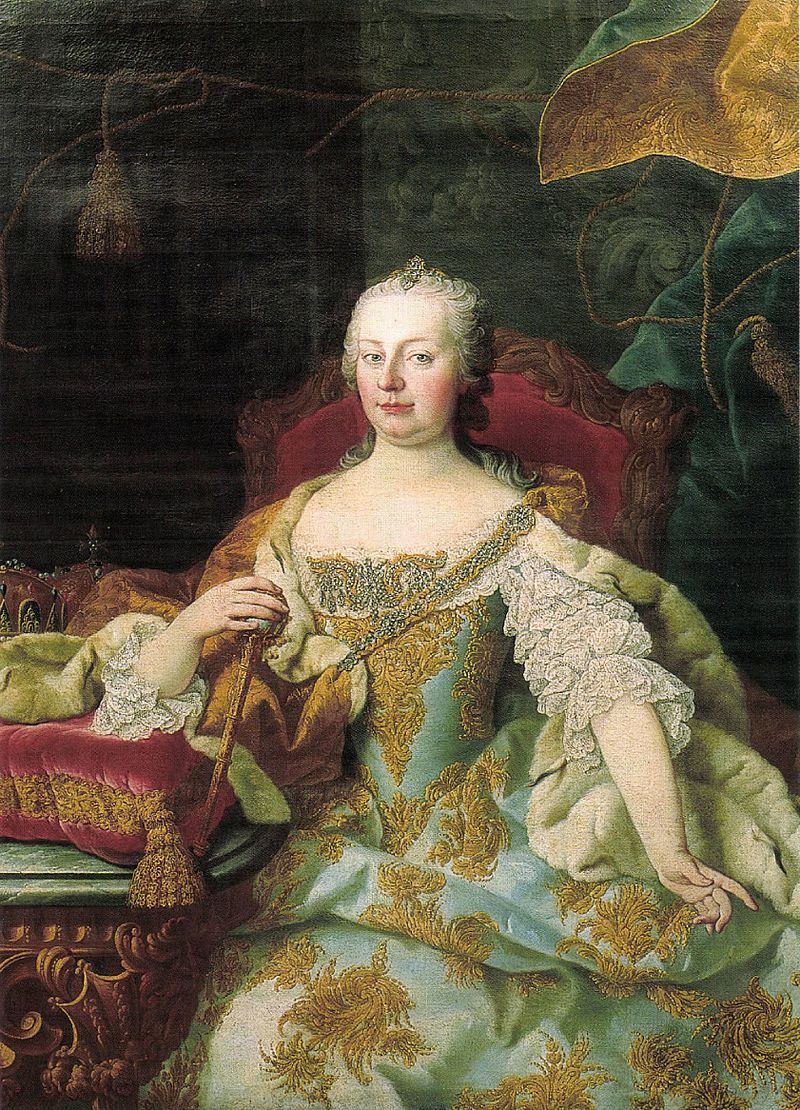The Keys of a Work: the Sanctuary Lamp of the Austrian Empire
This sanctuary lamp, made of solid gold except for its chains of cruciform links, is undoubtedly one of the most exceptional works in the treasury of the Holy Sepulchre. On one hand, the historical circumstances of its presence there are particularly well-documented; on the other hand, its very high aesthetic quality makes it comparable with the finest orfèverie produced in Europe during the 18th century.

[IT]La lampada di Maria Teresa d’Austria. Foto di Shay Ben Efraim [/IT][EN]The lamp of Maria Theresa of Austria. Photo by Shay Ben Efraim[/EN][FR]La lampe de Marie-Thérèse d’Autriche. Photo par Shay Ben Efraim[/FR]
The arrival of a gold lamp, a personal gift from Emperor Charles VI, is recorded in the New Register in 1730. The Franciscans clearly respected the sovereign’s wishes and placed the precious lamp in the Church of the Holy Sepulchre, possibly hung in the entrance to the Aedicula or on one of its walls. According to longstanding practice, in order to celebrate the customary solemnities of the Holy Week with due ceremony, the Franciscans erected in the entrance to the Aedicula a provisional altar richly adorned with the finest gifts from the Catholic nations.
The suspended objects represented each of the European powers in order to pay homage to the faith and piety of these generous donors who sometimes competed with one another in offering “the tomb of the King of kings” the most prestigious gifts. However, the exhibition of such luxurious objects may have offended certain Greek religious, as reported in a letter sent to Rome by the Custos of the Holy Land.
On April 2, 1757, some of them damaged the display set up by the Catholics as well as some of the objects, including the lamp offered by Charles VI of Habsburg. To compensate for the loss, two years later, the Empress Marie-Thérèse sent a new solid gold lamp to replace the previous one. The Empress thus re-established in the Holy Sepulchre the presence of a lamp offered by the House of Austria, a dazzling example of imperial alms which fortunately reached its destination despite the perils of travel along the roads of Palestine, where repeated inspections often led to pilfering and extortion before the gifts arrived intact.
This lamp is on display at the Museum for Islamic Art for the exhibition “Jewelry Making: Past & Present” in partnership with the Terra Sancta Museum from May 31 to November 16, 2019.is
Source: extracts from the notice of the work written by Jacques-Charles Gaffiot, art historian and member of the Scientific Committee of the Terra Sancta Museum, in the catalog of the exhibition at the Château de Versailles titled “Treasure of the Holy Sepulchre: Gifts of the Royal European Courts in Jerusalem,” in partnership with the Custody of the Holy Land.

[IT]Pittore anonimo. Ritratto di Maria Teresa d’Austria. Magyar Nemzeti Múzeum, Budapest[/IT][EN]Anonymous painter. Portrait of Maria Theresa of Austria. Magyar Nemzeti Múzeum, Budapest[/EN][FR]Peintre anonyme. Portrait de Marie-Thérèse d’Autriche. Magyar Nemzeti Múzeum, Budapest[/FR]



